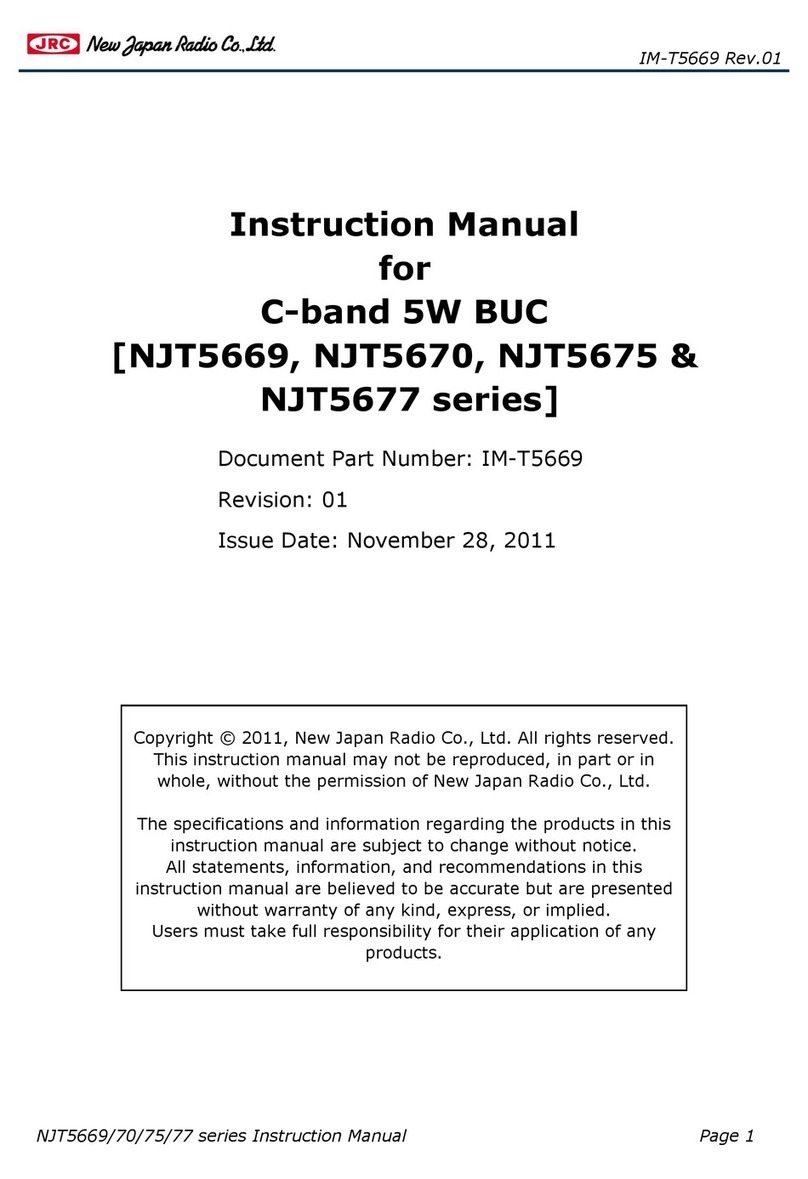
7ZPRR0001
5
•When installing two or more antennas, antennas in close proximity should
have a minimum vertical elevation separation angle of 20 and a minimum
vertical separation of 1m where possible, so that those antennas do not
enter each other's vertical beam width range.
Fig.1-5 Installing two or more antennas
•To avoid interference with other equipment and to prevent radio noise from
generating, do not place the VHF antenna, AIS/GPS antenna, and
VSAT/INMARSAT's dome within the range of the vertical beam width.
* If there is a concern that structural objects existing within the vertical beam
width may generate false images, equip the structural objects with a radio
wave absorber. (There are two types of absorbers: broadband type
having no specific resonant frequency and narrowband type which can
absorb a band with a specific frequency. Use those where applicable.)
Furthermore, it is effective to install a metal reflector, which reflects radio
waves upwardly, between the antenna and a structural object so that the
radar's radio wave will not directly come in contact with the structural
object.
When the structural objects exist in the surrounding area of Antenna unit,
the false echo may appear. The sector blank function is effective to
reduce the signal reflection from the structural objects. Because of it can
stop transmission. Therefore, it may reduce the false echo appearance.
Note: Because most radio wave absorbers have poor durability, some
must be replaced every year. When installing a reflector, the
area to the rear of the reflector becomes a blind sector.
Therefore, minimize the size of the reflector.
When the sector blank function set to on, ensure a sufficient
view field in the surveillance area.
* The above procedures for selecting an antenna installation position are
described based on the radar's antenna. Comprehensively select the
antenna position by considering other antennas' installation procedure
manual, building tower mast structure, strength of the selected position,
and vibration.
3) Confirmation during test run




























